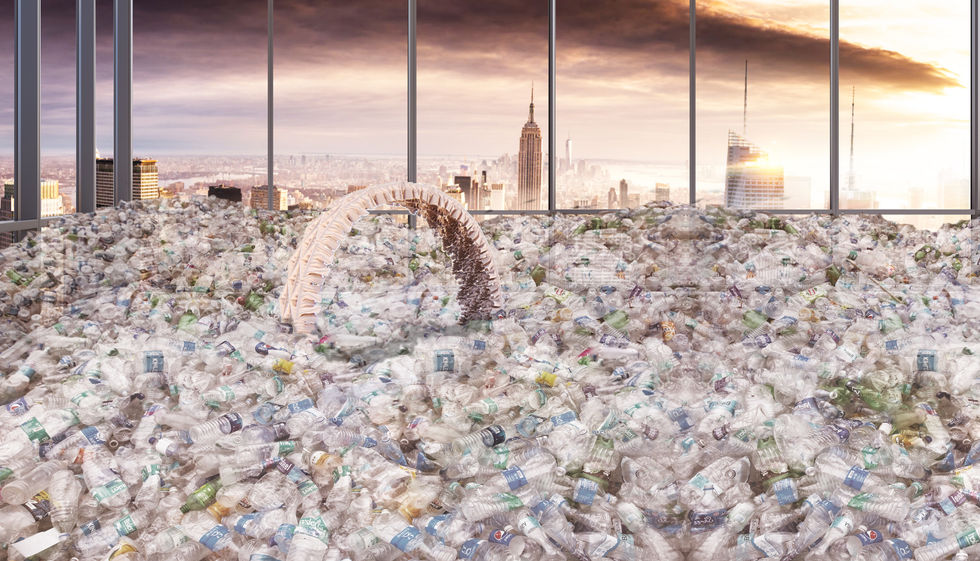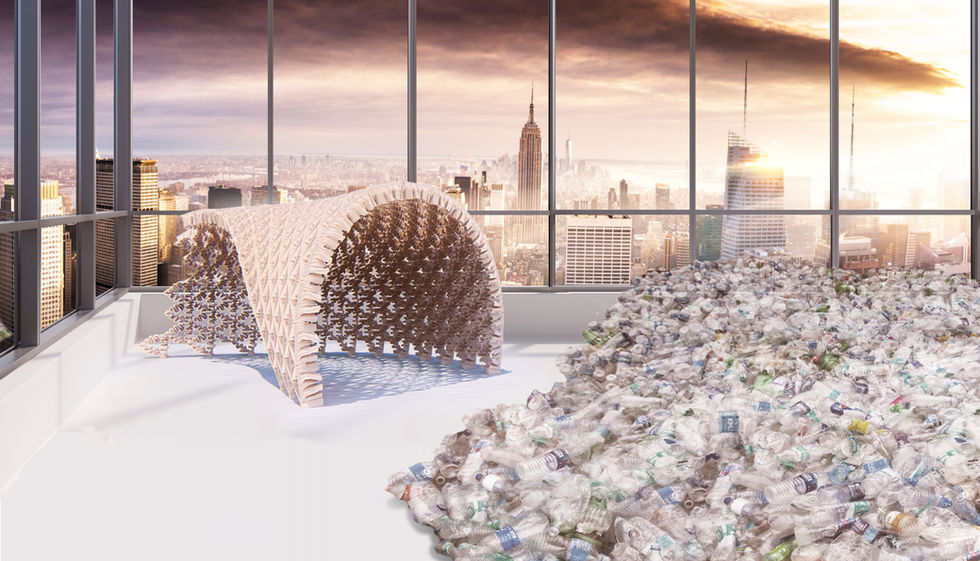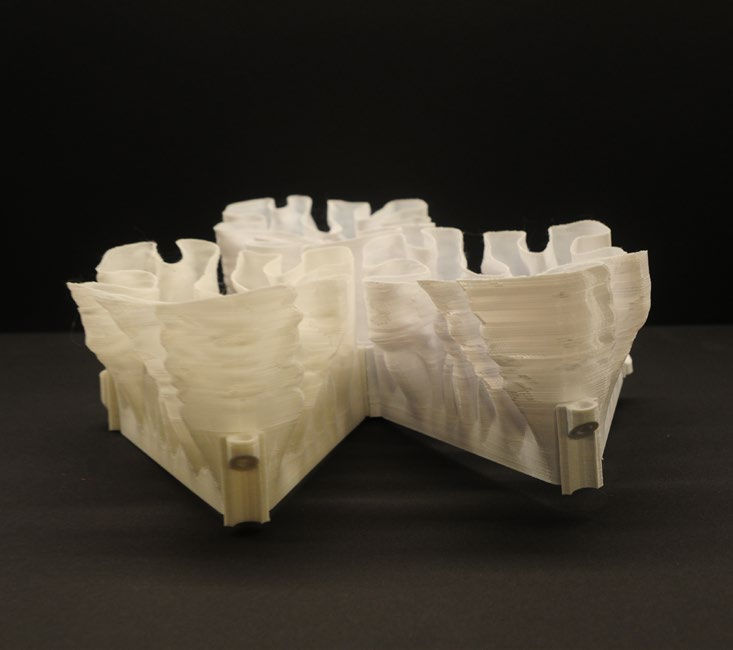
Where Rwandan soil rises to meet the sky, divine light bridges the gap between heaven and earth and all come together as one.
The chapel of the Crossing marks the meeting of God and mortal. Tutsi and Hutu; local and travel; all gathering together to celebrate the glory of the divine.
Turning the Plastic Tide - Pavilion
Client
YAC
Status
Complete - Competition
Location
Global Pavilion
Turning the Plastic Tide stems from the idea of the iconic ‘wave of waste’ morphing into an emblematic structure of new hope for the future of our planet: the global symbol of plastic waste devastation becoming the symbol of the new frontier for eco-sustainability.
Dregs of ocean waste pile up against the outside of the structure: emblematic of the morphing wave as well as a reminder that no one solution can solve our disposal devastation – many must come together to make real change against the wave of waste. Rising up to face the monument, the installation curls over to meet the ground as if a barrelling wave, reinforcing itself in an arch to hold back the tide of plastic waste – protecting its monument. Inside the barrier is a moment of peaceful clarity: surrounded by coral-like growth projecting oceanic light patterns onto the sand, it is easy to forget the troubles that lie just beyond the breaking point. Stay a moment, lie back on the sand and enjoy the light glittering gently through the canopy.
The choice to create a positive-outlook installation aims to exploit the emotional rollercoaster expected to be caused by the devastation portrayed in the exhibition as a medium to incite desire for change: becoming the light at the end of the tunnel by proffering hope for the future of our planet.
Actively contributing to the proffered eco-sustainable future, the installation takes hard plastic waste from each city, extrudes it into filament, and prints each pavilion iteration – converting the approximate equivalent of 6,880 plastic bottles per city. Beyond the reusable tension wires and locally sourced sand anchor, the installation is 100% recycled plastic. With no intention to return the renewed plastic to unwanted waste status, the installation offers many prospects for life beyond the exhibit: kept whole as a playground structure or event feature – or dismantled into individual cells and converted into sculptural light fixtures.
In order to make the process of 3D printing a full installation manageable, it is intended that local institutions in each city be invited to take part in what would become, as a global collaboration, the largest 3D printed endeavor to date – providing access to their 3D printers, and engaging their students to participate in the educational initiative of the exhibition.
The 3D printed shell itself is a fully parametric biophilic adaptation of a triangular grid shell structure inspired by a study of oceanic organisms – in particular coral formations. As coral reefs and their many colorful inhabitants have been drastically impacted by the rising tide of waste, this seemed an excellent starting point for the creation of a self-supporting 3D printed system intended to front an exhibition on the devastation of plastic waste.

























